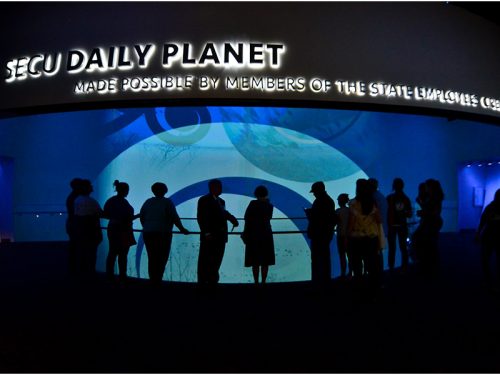Saturday, January 24
Nature Exploration Center
WRAL 3D Theater, 1st Floor
Coming soon!
Windows on the World, 3rd Floor
Coming soon!
Nature Research Center
SECU Daily Planet Theater, Floors 1-3
Coming soon!
Saturn Room, 4th Floor
Coming soon!
Uranus Room, 4th Floor
Coming soon!
Neptune Room, 4th Floor
Coming soon!


